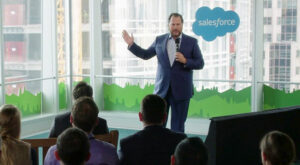
The future of e-commerce lies with multichannel retailers who leverage their Internet presence to enhance the real-world shopping experience, according to speakers Monday at a retail forum in Chicago hosted by Jupiter Media Metrix.
“There is very limited room for Internet-only retailers,” Jupiter research director Michael May told the E-Commerce Times.
Most of the benefits of having an online presence are harvested by brick-and-mortar stores, Jupiter senior analyst Ken Cassar told the E-Commerce Times. According to Cassar, the benefits of having an online presence include increased sales at the retail location, as well as faster inventory turnover rates and decreased payroll costs.
Having an established Web site drives payroll costs down, Cassar said, because shoppers who have already visited the retailer’s Web site often know what they want before entering the brick-and-mortar location, which decreases the amount of time that sales people have to spend with each customer.
Keeping It Real
The online shopping experience is not a replacement for shopping at a company’s real-world stores, according to William Lauder, president of Clinique Laboratories, a division of Estee Lauder.
“The technology does not yet exist to allow consumers to truly test our products online,” Lauder said. “The notion (that) we want to use the Internet only and throw out traditional distribution channels is folly at best, suicide at worst.”
Marketing via the Web
However, Lauder and other executives think that the Internet plays a valuable role in attracting and retaining shoppers to retail stores.
Julie Bornstein, general manager of Internet sales for Nordstrom.com, told the forum attendees that Nordstrom sees the Internet as a way to serve existing customers, deepen its market penetration and reach customers in areas where it is not economically feasible for Nordstrom to have a retail outlet.
The company also sees the Nordstrom.com site as a place for customers to research products, Bornstein said.
Crossing the Channels
Cross-selling works both from Web site to store and vice versa, the attendees said. For example, both Nordstrom and Office Depot use an in-store Internet presence to allow consumers to buy products that are out of stock in the brick-and-mortar outlet.
Bornstein said that Nordstrom salespeople have Internet access at the point-of-sale. So, if a particular item is out of stock, the salesperson is able to order it for customers online and have it shipped to their home.
Office Depot also uses in-store kiosks to allow consumers to purchase items that are out of stock, according to Monica Luechtefield, executive vice president of e-commerce for Office Depot. Some customers also use the in-store kiosks to purchase large and bulky items for home delivery.
“The content of the Web helps sales associates sell better and answer questions,” Luechtefield said.
Catalog Connections
Gary Landry, president and chief executive officer of Fredericks.com said that the catalogs sent out by Fredericks’ parent company are one of the best customer acquisition tools the company’s Web site has.
Luechtefield also said the Office Depot catalog is a valuable customer acquisition tool for the retailer’s Web site.
However, in order for the online channel of a multichannel retailer to be successful, the Web site has to imitate offline shopping in certain aspects. The online experience of Estee Lauder’s online properties “mimics, matches, and enhances the offline experience,” according to Lauder.
Layout Logic
One way that e-tailers are mimicking the shopping experience of their offline counterparts is to lay out their sites in a way that is similar to their brick-and-mortar outlets.
Luechtefield said that Office Depot’s Web site includes merchandise tie-ins and add-ons similar to what a consumer would find in a brick-and-mortar Office Depot.
She added that to be sure that dot-com executives stay in touch with the retail experience, they work in an Office Depot outlet once a quarter.
Profit Pressures
Unlike many Internet pure plays that have funded themselves purely through venture capital and are yet to be profitable, many brick-and-click e-tail operations are under pressure to pay their own way.
“I’ve got to make money at the end of the day,” Luechtefeld said in summing up Office Depot’s expectations for OfficeDepot.com.
Landry said that Fredericks.com was the “fastest growing and most profitable” sector of its parent company, Frederick’s of Hollywood.
He added that Fredericks.com started out as a one-person operation through Yahoo! stores with an initial outlay of $500. The site became profitable at Yahoo! and has been profitable ever since.![]()


























































Social Media
See all Social Media